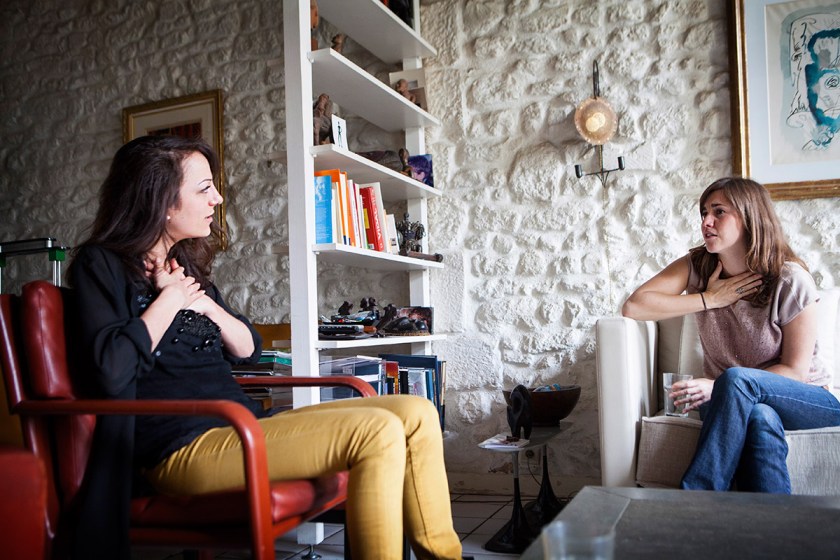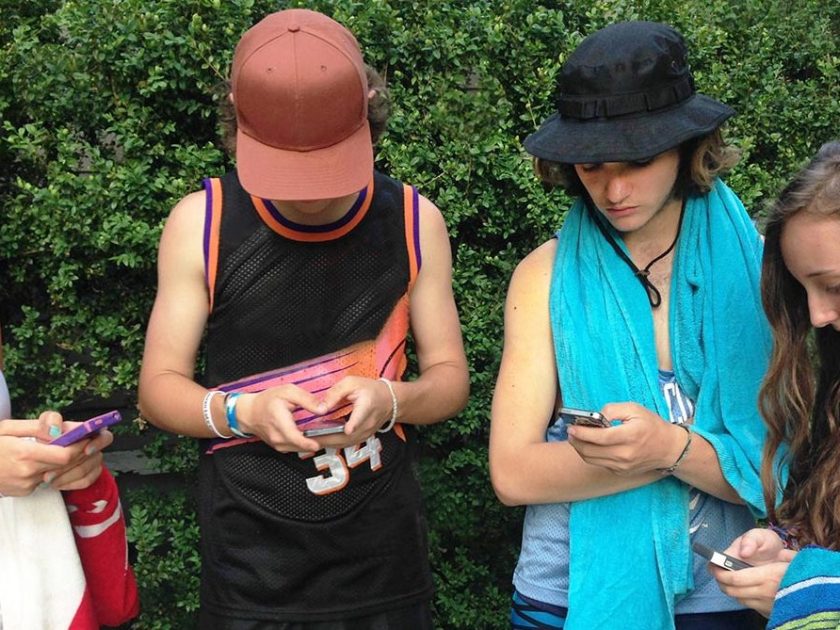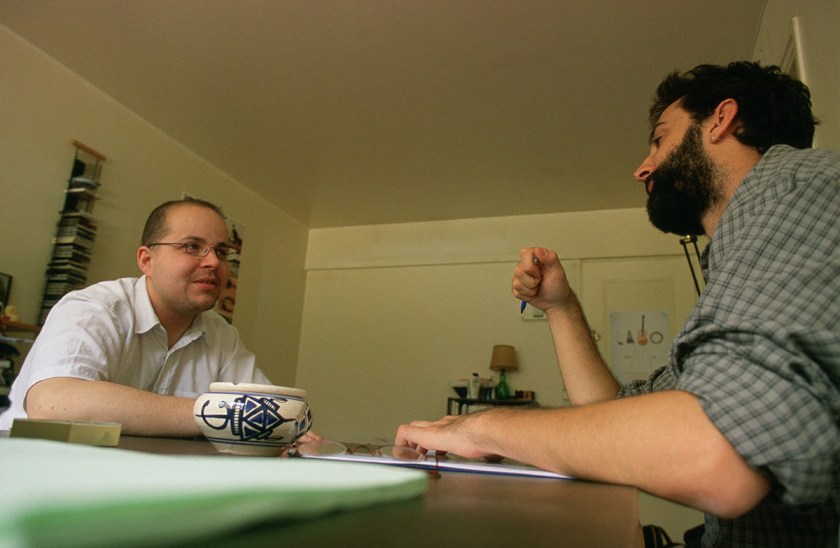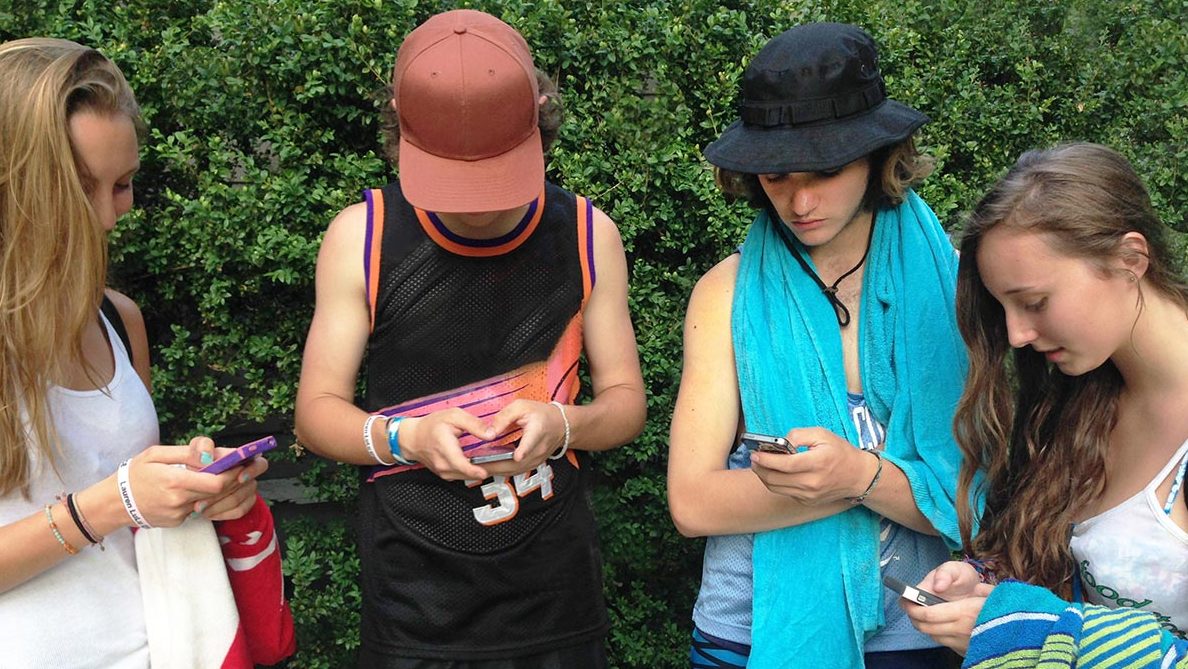
Last year, a study reported that the average American teenager spends nine hours per day using media. And this doesn’t even include the media a teenager uses at school or to do homework with. It’s just the media he or she uses for “enjoyment.”
Nine hours per day, every day.
Yes, that’s right: America’s young people spend more time playing video games, watching movies, and Instagramming than they do sleeping.
This statistic brings up a number of questions. Hundreds of them, actually. But here are two of them: What problems arise in young people from all this tech time? And are today’s therapists (many of them not digital natives) equipped to help young people with these problems?
A recent article on The Ringer reports that many teens and other millennials are experiencing a “digital disconnect” with their therapists. Essentially, many psychotherapists don’t understand the tech- and social media-related issues that their young patients are grappling with.
To find out if therapists are feeling a similar disconnect—and also gauge their level of concern for America’s young people and their many media-related predicaments—I reached out to three therapists who work with young people on a regular basis. What I found is that they have very different thoughts on the matter.
**
Tom Kersting started to notice a change in 2009. Kersting, a psychotherapist and counselor at a New Jersey high school, who also has a private practice (and occasionally pops up on TV shows like Fox & Friends), says he began to see a shift in the communication style and ability of the teenagers he was treating.
“It’s tough relating to young people these days,” admits Kersting, who is also the author of the upcoming book Disconnected: How to Reconnect Our Digitally Distracted Kids. “It’s gotten progressively worse, and it’s because of social media and smartphones.”
Kersting says teenagers today struggle with face-to-face communication because, quite frankly, they don’t do much of it. He says he has seen hundreds of kids who are glued to their video games and smartphones and are unable to have a conversation with him.

One teenager, for example, missed more than 100 days of school in the last two years because he didn’t want to—or couldn’t—pull himself away from his video games. He hadn’t been to school in two months when his parents finally took away his Xbox. “The kid pulled a knife on his parents and threatened to cut his dad’s $1,000 guitar,” says Kersting.
Another young man arranged his entire life around his Xbox. He received tickets to a New York Giants game but decided not to attend because he didn’t want to stop playing video games. He missed his 16th birthday party and a PSAT test for the same reason. Finally his parents confiscated his Xbox. The kid called the police and said his parents were physically abusing him.
“And it’s the same with smartphones,” says Kersting. “When smartphones are taken away, these kids go crazy. It’s like a heroin addict having his heroin flushed down the toilet.”
Worse, Kersting says all this time with devices is causing actual changes in the brain. He brings up the idea of neuroplasticity: the brain’s ability to reorganize itself by forming new neural connections throughout life. (In other words, our brains are not stagnant; brain cells adjust to new situations or changes in their environment.)
“This generation of millennials now, they’re spending very little time in face-to-face communication,” says Kersting. “To communicate effectively, you need neural pathways. They’re not developing these. They’re not developing the neural pathways they need to make eye contact, to have a conversation with another person, to cope with bad things in their life.”
Kersting says he’s seeing more and more young people who have very poor communication skills. They give one-word answers. They don’t make eye contact. They exhibit little energy.
“As a therapist, I have a tough time picking up on the body language nuances of these young people,” he says. “They don’t express themselves like older generations.”
Kersting views this lack of communication ability in young people as an epidemic that threatens our future. “It’s frightening,” he says. “They won’t land jobs. They won’t lead. They have no emotional intelligence. And the generation behind them is gonna be even worse.”

So what can be done about these issues? How does one create these necessary neural pathways to communicate and cope in an increasingly digital world? This is the subject of his book, he says. He suggests disconnecting and getting back to basics.
“We have to learn how to embrace boredom,” Kersting says. “We have to seek silence. The problem is that millennials spend all their time in front of a screen. We need to develop a new habit. We need to unplug and reengage in the real world. We have to take a personal timeout, reconnect with nature, focus on our breathing, and create our own thoughts. If we don’t, we’re going to see a major increase of anxiety and depression. And we will fall farther and farther into this vortex of cyberspace.”
**
Therapist Matt Botwin is less concerned about the vortex of cyberspace. Overall, he’s significantly less freaked out by young people and their tech-associated problems. And he says he has not had trouble relating to the millennials who come to his private practice in downtown Manhattan.
“I have not found that to be the case,” he tells me repeatedly during our half-hour conversation. “I certainly haven’t had difficulty relating to them because they’re using something I’m not familiar with.”
Botwin, who is 46, says most of his young people are on social media. But so are his older clients. And so is he. He has a private Instagram account and has used Facebook in the past.
“I have definitely dealt with a few people who seem to be using social media more than is best for them,” he says. “That’s a judge-y way to say it. I was worried with the amount that some of them used it. Because they were comparing themselves with others on social media. They didn’t understand that it’s nothing but a stream of things that other people want you to see. It’s the highlight reel.”
Botwin sees the social media problems that do crop up with his patients as just another form of “real life” problems. They’re a manifestation of deeper issues, rather than the cause. For example, he says he once had a patient who was distraught over comments on social media.
“But within that context, I understood it,” Botwin says. “Someone had posted some awful things, and he was annoyed by it. He would’ve been just as annoyed if that person had said it in person.”
Another time, a female patient’s coworker took something his client had written on Twitter and showed it to HR. His patient nearly got fired. (Ultimately, the patient’s boss told her to be more careful.)

But overall, media-related problems don’t dominate their sessions.
“I haven’t found my younger patients to be sort of obsessed with social media or video games,” he says.
When I describe to Botwin some of the horror stories that Kersting shared with me—the heroin-level addiction, the poor communication skills—he brings up a good point.
“Maybe it’s a suburban thing,” he says. “Brooklyn and Manhattan kids—they can jump on a subway and be a little more independent, and they’re able to connect in person. If you’re in the suburbs, and you can’t drive yet, maybe you can’t meet up with others as easily. So social media and video games are how they’re connecting.”
**
Robin Levick is seeing more and more millennials lately. As a therapist at Well Clinic in San Francisco, he says twenty-somethings are pouring into the area for tech jobs, and many of them end up sitting across from him. And Levick, a 35-year-old who got his first PC at age 11 and had a pager growing up, says he’s connecting with his clients just fine, overall.
“I’m not really struggling with millennial clients,” he tells me soon after we begin our hour-long conversation. “But I do have a lot of thoughts about young people and technology.”
Levick brings up the concept of Moore’s Law, which says that computer power increases exponentially. (It doubles, or more than doubles, every two years.) Levick thinks cultural change is also increasing exponentially. This leads to a widening gap between generations, he says.
“So it makes sense that there are these issues,” he says. “The world now is radically different than it was for past generations. For millennials, they’re living as avatars for a bigger portion of their lives.”
Part of the misunderstanding, says Levick, is that for young people, these digital interactions are social contact. Which isn’t to say Levick is totally cool with the way culture is moving. He sees what social media is doing to young people, and a lot of it is not good.
“I think much of the time we’re relating to each other through fantasy and projection,” he says. “And the technology in social media only increases that. There is a sort of disconnect from one’s own body. You can carefully groom how you want to be seen.”
This technology affects how young people date, too, says Levick. It’s now normal to meet potential romantic partners online, through the many dating apps.

“For young people, it’s very tough to get to the relating part of the dating,” he says. “This idea of ghosting that they’re doing—I think that’s happening because of the limitless options. They’re going on date after date after date, with one person after another. And once the fantasy is punctured, and they realize that this person is not always going to be who they want them to be, they move on to the next person. I don’t think that’s great for people.
“They’re less inclined to work things out or talk through their problems,” he adds. “That’s probably always been the case with young people throughout time. But not all young people had an unending stream of carefully cultivated profiles in their pocket.”
He also sees the smartphone as a way for a person to soothe himself by way of distraction, rather than via human contact.
“Some kinds of soothing are nurturing, and others are dissociative or addictive,” explains Levick. “There is a host of research showing that soothing via distraction and dissociation has negative mental and physical health outcomes. This is why embodied self-awareness and psychotherapy are so important. They are an antidote to this kind of numbing behavior, which works in the moment but is ultimately destructive.”
In other words, when you deal with a problem by distracting yourself on your phone, you’re not getting the health benefits of relating to another person. Let alone the massive relief you get after a good cry.
Levick also sees technology—and specifically, social media—as responsible for creating a bar that’s impossible to live up to.
“The standard of perfection from media is so distorted,” he says, citing Instagram accounts in which women post professionally created photographs and pass them off as candid shots. “It’s distorted in the amount of fun one should be having, the perfection of the smile they should have, and the perfect style they should have. That’s a lot to live up to, and it’s not real.”
Still, Levick says he is careful not to dismiss the social media–related problems of his patients as trivial.
“If there’s genuine emotional distress, then it’s meaningful to me,” he says.
This goes double for any issue related to a young person’s love life. Even if it has to do with something as small as an ex-boyfriend not “liking” a young woman’s Instagram photo.
“I’ve never understood people’s dismissive attitude about the love between young people,” he says. “If you’re not a fully formed self when you first fall in love, that can make that relationship even more powerful. You kind of merge with the other person and become one. And then think how painful that is when that gets broken. It’s like losing a part of yourself.”
Levick says he has also treated young people who kept spending time on social media, even though it was leaving them feeling bad. (Almost like cutting oneself, digitally.) In these cases, Levick says he might try to help a patient really think about the ways in which their engagement with social media made them feel. “If it’s consistently making you feel bad, and you are doing it anyway, that’s something that would need to be understood.”
Overall though, Levick doesn’t view these many hours spent on video games and social media as the main cause of distress in a young person’s life.
“People’s traumas are for a variety of reasons,” he says. “This is just another arena, another pressure. I don’t see it as the issue.”
—Shawn Donnelly for RealClearLife
The Charge will help you move better, think clearer and stay in the game longer. Subscribe to our wellness newsletter today.

























